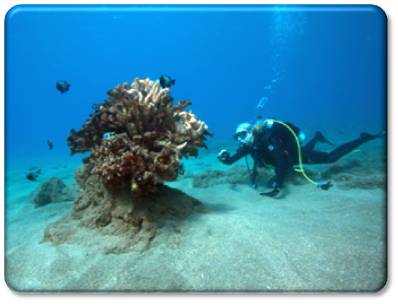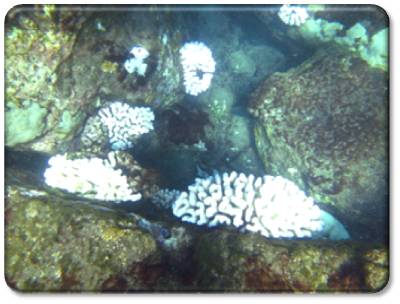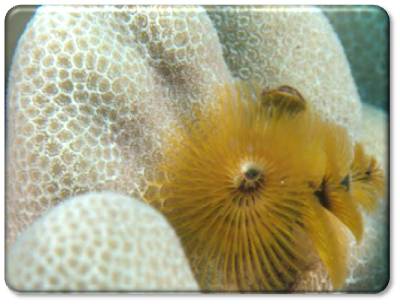Your are not logged in |
||||||||||
| HOME | ABOUT | NEWSROOM | SEARCH | UPLOAD | MATCH | CONTACT | JOIN | LOGIN | ||
 Corals get their varied colors from the millions of single celled algae, called zooxanthellae, inside their transparent polyps. Each polyp’s gastrodermal cell contains a symbiotic zooxanthellae, which is the coral’s main source of energy (sugars, glycerol, and amino acids). In return, the coral protects the algae from predators and gives it phosphates, nitrogen compounds and carbon dioxide.
Corals get their varied colors from the millions of single celled algae, called zooxanthellae, inside their transparent polyps. Each polyp’s gastrodermal cell contains a symbiotic zooxanthellae, which is the coral’s main source of energy (sugars, glycerol, and amino acids). In return, the coral protects the algae from predators and gives it phosphates, nitrogen compounds and carbon dioxide.
When coral is stressed, the algae becomes toxic and is expelled causing the coral to becomes white. This is called coral bleaching. Although the expulsion mechanism is still under research, there are hypotheses as to either the separation of zooxanthellae or the gastrodermal cell from the polyp.
Example coral bleaching event stressors are:
► Water temperature
► Pollution - marine plastics, sunscreen, invasive species
► Runoff
► Low tides
► Too much sunlight
If it’s due to pollution or runoff, the zooxanthellae will be cut off from sunlight and not survive. Corals can recover from a bleaching event. However, with continued stress, the coral will die.
Maui and Beyond...
"Global warming has caused coral bleaching, nonendemic lionfish are eating all the indigenous fry, stony coral tissue loss disease is wiping out hard corals, and there are more frequent and more brutal hurricanes than before; the Caribbean reefs have endured some challenges in recent years, and a new one is happening quickly.

Sea urchins are dying across the Caribbean at a pace that rivals the mass die-off in 1983, alarming many who say this could further decimate the already battered coral reefs. You see, it's the herbivorous urchin population that helps keeps corals free of algae. With a growing number of reports from the islands of St. Lucia and Dominica, to Saba and the U.S. Virgin Islands, then west to Cozumel, the worry is that the urchin die-off will mean that algae will engulf the reefs, leaving no space for young corals to attach. The reefs will not be able to regenerate themselves and will die. If you have dived the Bahamas or the Caribbean in the last decade, you probably have already seen some reefs covered in algae. At first, only the black long-spined urchins were affected, but two other species have since been affected, including the rock boring sea urchin and the West Indian sea egg. Overfishing across the Caribbean already had led to a greater abundance of macroalgae, which was kept in check by sea urchins that are now dying. The Atlantic and Gulf Rapid Reef Assessment, involving many organizations, recently helped create a network to investigate the deaths, analyze tissue samples, and find solutions to preventing a great die-off of urchins in 2022." - Undercurrent by Ben Davison For more information about coral, visit Animal Tracks Coral Facts |
Search the Image Database...
 View Coral Image Gallery |
Our image database has a growing
collection of images from around the world contributed by folks like
you. Currently, most of our coral images are from West Maui diving
spots. You may also search our image database for plants and animals that interest you. You could also create an account to share your own images. Our main purpose is to track marine life via digital imagery. We are also dedicated to education and sharing information related to coastal and ocean habitats and inhabitants. |
